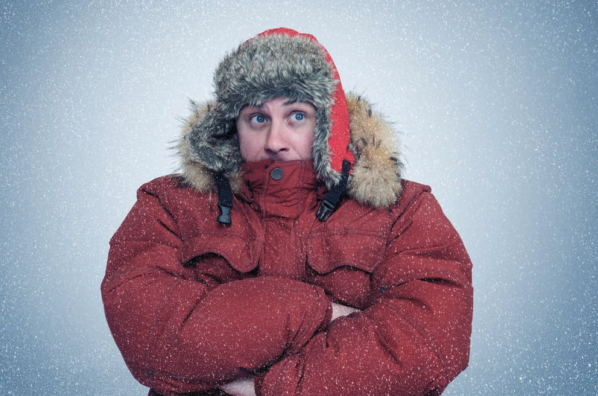We’ve all been there…you board your plane and are going somewhere nice and warm, so you’re dressed for where you’re landing. Probably shorts and a T-shirt.
As you get all settled for your 3-hour flight, you notice it’s a little chilly inside the plane. But you figure it’s because the passenger door is still open, it’s cold outside, and the air from outside is blowing in. It’ll warm up once you get on your way.
The plane takes off and as you sit there, you realize it’s still pretty darn cold inside the plane. It never does warm up and by the time you land in sunny, warm Pick A Place, you’re freezing.
Why is it so cold?
So what’s up with that? Why is it so cold on planes? It turns out there’s an actual, medically-based reason, way above and beyond the pilot is in the midst of her “changes” and is prone to hot flashes, or a flight attendant has a sadistic streak, or they want to keep you awake and aware in the event of an emergency. (I’ve heard all of those at one point or another)
ASTM International (formerly known as American Society for Testing and Materials), is an international standards organization that develops and publishes voluntary consensus technical standards for a wide range of materials, products, systems, and services. Including planes. They conducted a study that looked into the correlation between people fainting while in the air, and planes’ cabin pressure and temperature.
A medical reason
They discovered that the risk of people fainting (the medical term is “syncope” [SINK-oh-pee]) in-flight was about 3–9 per 1000 passenger flight hours, depending on the type of aircraft. They also realized this was happening because of a medical condition known as hypoxia. Hypoxia is when body tissues don’t receive enough oxygen, and ASTM International’s study determined that high cabin pressure and warm temperatures can both increase the chance of this reaction, even in otherwise healthy people.
Airlines (obviously) can’t do anything about the cabin pressure, but they can keep the cabin temperatures on the cooler side to help decrease the risk of syncope.
At what temperature do they keep planes?
Despite the study and its findings, federal entities don’t have any specific guidelines of what temperature the inside of a plane cabin should be. However the Association of Flight Attendants, the union representing 50,000 members working at more than 20 airlines, has been campaigning for years to get the federal government to put standards in place for cabin temperatures (The only temperature regulation now requires the cabin temperature to be within 5 degrees of the cockpit. But it doesn’t set minimums or maximums). They recommend a range of 65 to 75 degrees Fahrenheit.
Of course, the fact that you tend not to move around, and just stay in one space, just reinforces feeling cold. If you were moving around the plane, you wouldn’t feel the chilliness as badly.
Oh, and if you could swear that planes used to be warmer years ago, you’d be right. The study was done in 2005 and published in 2008.
So if you tend to get chilly easily, bring a sweater with you on that plane. Just in case.
Want to comment on this post? Great! Read this first to help ensure it gets approved.
Want to sponsor a post, write something for Your Mileage May Vary, or put ads on our site? Click here for more info.
Like this post? Please share it! We have plenty more just like it and would love it if you decided to hang around and sign up to get emailed notifications of when we post.
Whether you’ve read our articles before or this is the first time you’re stopping by, we’re really glad you’re here and hope you come back to visit again!
This post first appeared on Your Mileage May Vary

